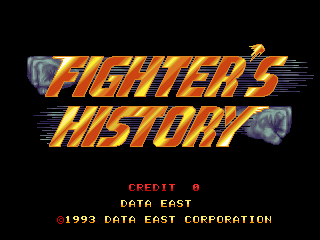Fighter's History (US ver 42-06, DE-0395-1 PCB)
Game Information
| manufacturer | Data East Corporation |
| year | 1993 |
| clone of | fghthist |
| other clones | fghthista fghthistb fghthistj fghthistja fghthistjb fghthistu fghthistua fghthistub fghthistuc |
| genre | Fighter |
| downloads | 63 |
Screenshots










Download Details
| split set | fghthistua.zip 427.44k |
| parent set | fghthist.zip 5.39m ↗ |
| standalone set | fghthistua.7z 4.64m |
Driver Details
| source | dataeast/deco32.cpp |
| status | imperfect |
| emulation | good |
| savestate | supported |
| type | sound |
| overall | imperfect |
Series Details
Screen Details
| display | screen |
| type | raster |
| orientation | horizontal |
| width | 320px |
| height | 240px |
| refresh | 57.8mhz |
Input Details
| player | 1 |
| type | joy |
| buttons | 6 |
| directions | 8 |
| player | 2 |
| type | joy |
| buttons | 6 |
| directions | 8 |
Chipset Details
| name | ARM |
| clock | 6.68mhz |
| name | Hudson Soft HuC6280 |
| clock | 3.84mhz |
| name | Hudson Soft HuC6280 |
| clock | 3.84mhz |
| name | Hudson Soft HuC6280 PSG |
| clock | 1.92mhz |
| name | Speaker |
| clock | N/A |
| name | YM2151 OPM |
| clock | 3.41mhz |
| name | OKI MSM6295 ADPCM |
| clock | 0.96mhz |
| name | OKI MSM6295 ADPCM |
| clock | 1.92mhz |
ROM Details
| name | size | crc |
|---|---|---|
| le00-1.1f | 512.00k | fccacafb |
| le01-1.2f | 512.00k | 06a3c326 |
| le02.18k | 64.00k | 5fd2309c |
| mbf00-8.8a | 1.00m | d3e9b580 |
| mbf01-8.9a | 1.00m | 0c6ed2eb |
| mbf02-16.16d | 2.00m | c19c5953 |
| mbf03-16.17d | 2.00m | 37d25c75 |
| mbf04-16.18d | 2.00m | f6a23fd7 |
| mbf05-16.19d | 2.00m | 137be66d |
| mbf06.15k | 512.00k | fb513903 |
| mbf07.16k | 512.00k | 51d4adc7 |
| kt-00.8j | 512.00b | 7294354b |
| ve-00.3d | 279.00b | 384d316c |
| ve-01a.4d | 279.00b | 109613c8 |